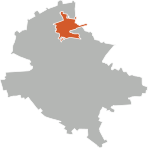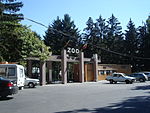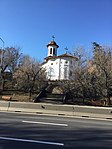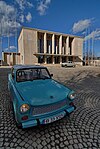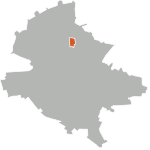Băneasa Shopping City
BăneasaShopping malls in Bucharest

Băneasa Shopping City is a shopping center in the north of Bucharest, Romania, opened on 18 April 2008. Located in the Băneasa neighborhood of Sector 1, it is part of the Băneasa Developments owned by convicted criminal [1] Aurel Gabriel Popoviciu and Radu Timofte.Besides the Băneasa Commercial Platform, Băneasa Developments orchestrates a mix of real estate developments, shopping center management and an extensive entertainment unit. Băneasa Shopping City is an extensive commercial and real estate area located in the northern area of Bucharest.
Excerpt from the Wikipedia article Băneasa Shopping City (License: CC BY-SA 3.0, Authors, Images).Băneasa Shopping City
Șoseaua București-Ploiești, Bucharest Băneasa (Sector 1)
Geographical coordinates (GPS) Address Phone number Website External links Nearby Places Show on map
Geographical coordinates (GPS)
| Latitude | Longitude |
|---|---|
| N 44.50569 ° | E 26.08899 ° |
Address
Băneasa Shopping City
Șoseaua București-Ploiești 42D
015011 Bucharest, Băneasa (Sector 1)
Romania
Open on Google Maps


